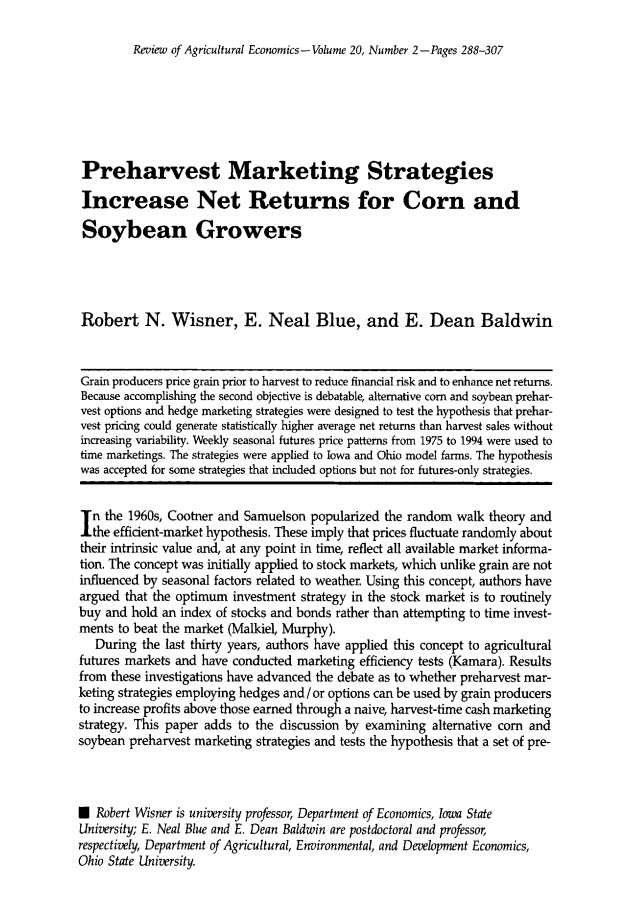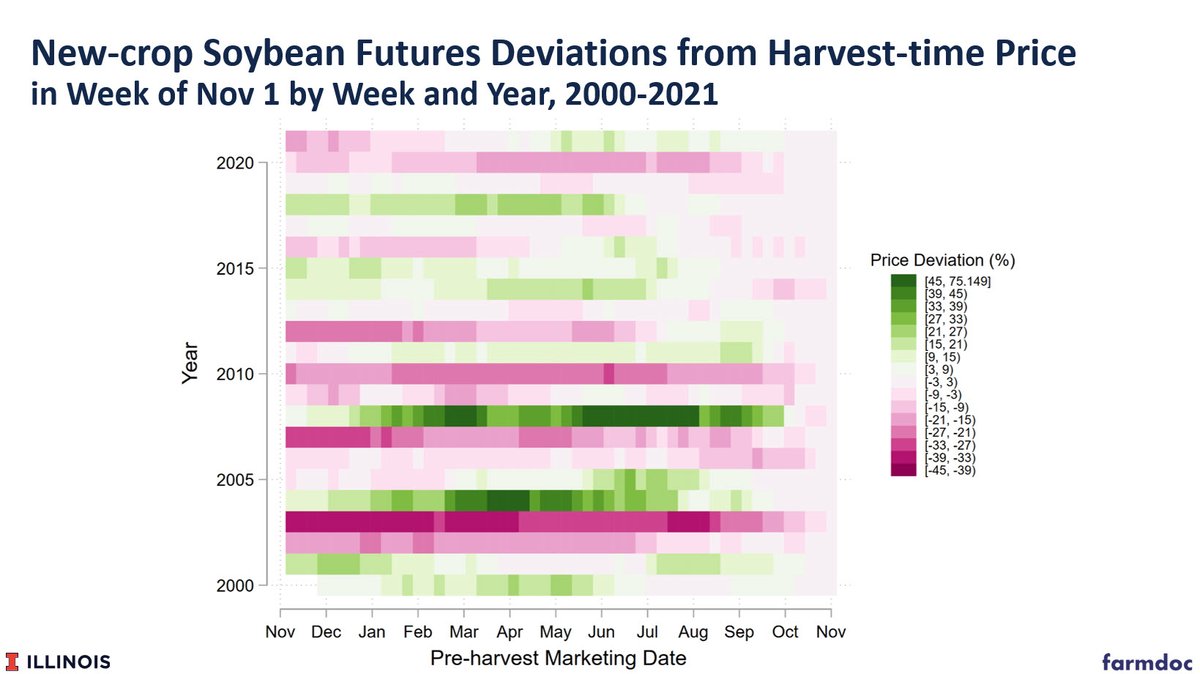
1. Do new crop corn and soybean futures contain a systematic pre-harvest "weather" premium? Something that @JosephJanzen covered in our IFES webinar last week. Before I review Joe's results on this question, some background.
@JosephJanzen 2. This argument has been around a long time. Back in the 90s, Bob Wisner of Iowa State and Dean Baldwin of Ohio State (better people you will never know) were on one side, arguing there was a pre-harvest weather premium could benefit crop farmers.
@JosephJanzen 3. Carl Zulauf and I were on the other side, basically arguing that under the efficient market hypothesis this did not make sense and that the statistical evidence was weak. Since Carl and I were at Ohio State and so was Dean Baldwin the different views were all in one place!
@JosephJanzen 4. So Wade Brorsen I believe organized a special session at the NCCC-134 Meeting where we could both present our views and papers on the issue in 1997. It went so well that both papers were published together in 1998 in the Review of Agricultural Economics (now AEPP). 



@JosephJanzen 5. Now fast forward over 20 years. Joe Janzen has taken a fresh look at the data for corn and soybeans. Corn first. This is a "heat map" visualization of the returns from pre-harvest selling by week in corn over 2000-2021. True out-of-sample test of the arguments in the 90s. 

@JosephJanzen 6. Green means selling in that week and year would have produced profits, pink losses. Darker the bigger the gains or losses. A lot of green on the chart. Of course, some pink as well in years when new crop corn futures rose into harvest. 

@JosephJanzen 7. Heat map for soybeans. Clearly more pink than the case for corn. 

@JosephJanzen 8. Joe also generated plots of average returns by week of the pre-harvest period along with ranged of returns. Huge variability for corn as you would expect. But notice that average is positive all the way through Sep. Huh? 

@JosephJanzen 9. Soybean average line very different. Awfully close to zero. Interesting. 

@JosephJanzen 10. So who was right back in the 90s? Have to give props to my friends Bob Wisner and Dean Baldwin. At least on corn, they were right and Carl and I were wrong. Really does appear to be a systematic weather premium in new crop corn futures during the pre-harvest period.
@JosephJanzen 11. While I can't argue with the statistical findings on corn the last 20 years, I still don't understand the theoretical basis for a weather premium in corn but not soybeans. Maybe we will know in another 20 years!
@JosephJanzen 12. Here are the links to Joe's excellent #FDD articles on corn and soybean pre-harvest marketing returns. Corn: farmdocdaily.illinois.edu/2021/06/the-we… Soybeans: farmdocdaily.illinois.edu/2021/06/the-ab…
• • •
Missing some Tweet in this thread? You can try to
force a refresh
















